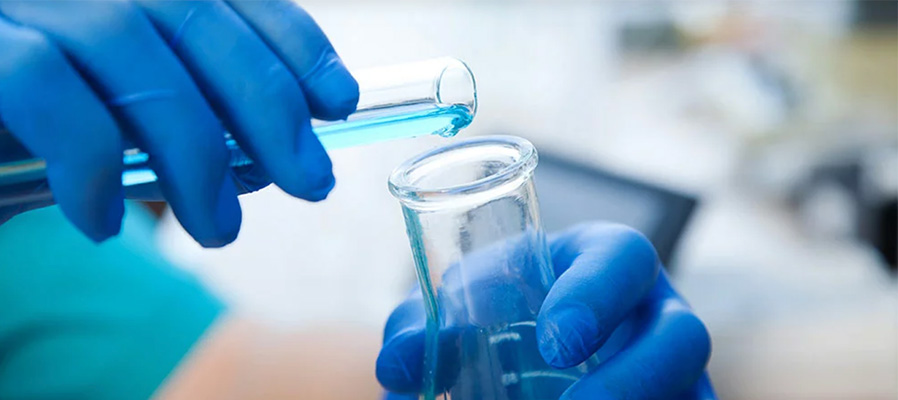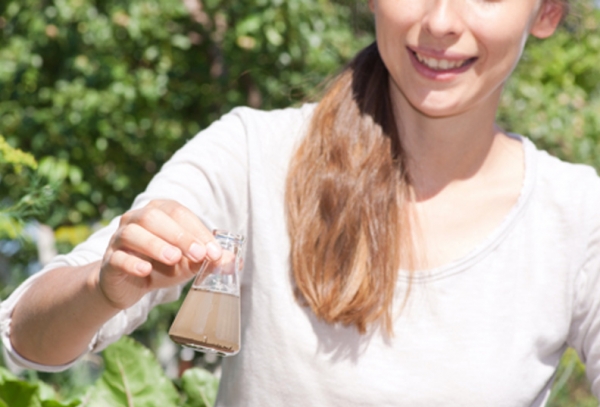How to Avoid PFAS Chemicals

How to Avoid PFAS Chemicals
In the midst of a viral pandemic, we remain concerned with the overall health and safety of our community and neighbors. At Aqua Pump, we aim to help improve the water quality of our customers as one of our underlying core values. So, as we focus on our community health, we want to share additional information about PFAS chemicals and offer tips to avoid lasting negative health effects.
First, what are PFAS?
PFAS are man-made chemicals that are common in many non-stick products, cleaning products, food packaging, paints, along with water and oil repellent products. The manufacturing world invented PFAS to create products that many of us have utilized since the 1940s. However, now we are learning about the downstream impact of these chemicals. For example, PFAS chemicals migrated into the air, dust, food, soil and water supply of the local environments around manufacturing facilities. Susan M. Pinney, a Department of Environmental Health professor at the University of Cincinnati describes the long-term impact1.
“I think that people should be concerned about the amount of PFOA and PFOS that is in our environment. These are chemicals with long half-lives.”
PFAS chemicals are so harmful to our health over time because they remain in the environment and our bodies. Essentially, PFAS chemicals do not break down over time and accumulate in our bodies and the environment. Additionally, in 2007, the US Centers for Disease Control and Prevention (CDC) released a study indicating PFAS chemicals could be found in 98% of the US population2.
COMMON PFAS CHEMICALS TO AVOID
Recently, Bloomberg News filed a Freedom of Information Act with the US Environmental Protection Agency to identify chemicals “made, imported, mixed or repackaged” within the US from 2006 to 2106. As a result, Bloomberg obtained a list of over 600 PFAS3!
Although there are numerous types of PFAS chemicals, the most common (and studies) are PFOA (perfluorooctanoic acid), PFOS (perfluorooctanesulfonic acid), PFHxS (perfluorohexane sulfonic acid) and PFNA (perfluorononanoic acid).
Interestingly, consumers should note that manufacturing companies committed to phasing out well-known PFAS. For example, PFOS were voluntarily phased out of production in 2000 and PFOA were phased out in 2006. However, the manufacturing companies created variations of the PFOS and PFOA, such as GenX, which are in production and likely just as persistent. As a result, the list of PFAS chemicals continues to grow over time.
Additionally, due to the use of PFOS and PFOA over time, the damage has already been done and the health risks remain for future generations. For example, PFAS chemicals were used in firefighting foam and used frequently at military bases across the country. As part of an investigation by the US Government Accountability Office4, the Department of Defense (DOD) identified over 400 locations with known (or suspected release of PFAS chemicals). The EPA issued a health advisory due the contamination of the drinking water and the DOD took action.
“DOD reported taking actions (such as providing alternative drinking water and installing treatment systems) to address PFOS and PFOA levels exceeding those recommended in EPA’s health advisories for drinking water for people on 13 military installations in the United States and outside 22 military installations in the United States. The military departments had reported spending approximately $200 million at or near 263 installations for environmental investigations and responses related to PFOS and PFOA. According to DOD, it may take several years for the department to determine how much it will cost to clean up PFOS and PFOA contamination at or near its military installations.”
Finally, although the main types of PFAS are phased out, consumers should understand this is in name only. Their presence over the years continues to impact local environments and manufacturers continue to utilize similar chemicals (with similar environmental and health effects).
STEPS TO AVOID PFAS CHEMICALS
Unfortunately, PFAS chemicals are everywhere. While it may be impossible to completely avoid PFAS exposure, we can take steps to understand our environment and reduce the risk of excessive consumption. For example, take some time to learn about your local environment.
- Is there a manufacturing plant nearby?
- Do you live near a landfill?
- Does your water company share water quality reports?
Generally, PFAS exposure occurs from drinking contaminated water, along with consuming seafood caught from contaminated water or food grown in contaminated soil. Additionally, consuming food packaged with PFAS or processed on equipment that contains PFAS. Finally, using products that contain PFAS also increases your exposure.
So, what should you do to reduce your risks and PFAS exposure?
First, test your home water supply!
We use water for almost everything. From bathing and cleaning to cooking and drinking, ensuring a clean water supply is one of the most important steps you can take to improve your health (and your families health).
Aqua Pump truly believes in clean drinking water for everyone. As a result, we offer FREE in-home water testing for basic and standard contaminants. Based on your results, we offer a variety of solutions, so you can find the right option for your needs.
For homes with PFAS exposure, then a reverse osmosis filter or carbon-based water filters protect your family from chemical exposure. It is important to note that not every water filtration system or device protects against PFA chemicals.
Next, do not boil your water. Generally, we think boiling water helps remove all contaminants. For the most part, boiling removes many common water contaminants, but NOT PFAS! In fact, boiling water with PFAS can actually concentrate the chemicals. The simplest method to ensure clean drinking water is buy bottled water that explicitly tests for PFAS.
Additionally, homeowners with PFAS exposure in their water should be mindful that daily activities, such as showering, bathing and cleaning dishes or doing laundry do not pose major risks. However, as a precaution, reducing shower/bathing times and/or limiting time in lakes or streams makes sense for some people as well.
Finally, understand where your food comes from. For example, if you maintain a home garden, then water your fruits and vegetables with a clean water supply. Based on the type of PFAS, these can be flushed from the soil, which helps ensure safe produce. Also, always wash the produce (or peel root vegetables) as another safety measure. Likewise, if you can buy local and ask the farmers for more information about the water and soil, then that helps ensure you consume safe food.
Related, avoid non-stick pots and pans while cooking. PFAS chemicals are heavily used in these products (which create the non-stick coating). As a result, stainless steel cookware offers a safe option. Similarly, look at the labels of your cleaning products and avoid products with these chemicals.
As we learn more about PFAS, the steps to avoid these chemicals may change over time. We face a lot of health risks, so learning and understanding about the food we eat and products we use to clean our homes will continue to offer the first line of defense. From a water quality side, testing your water remains the starting point.
If you would like to test your water supply for PFAS exposure be sure to reach out to Aqua Pump Co. Inc. at 860-684-5349 to schedule an appointment.
Resources
1. Source: CNN available athttps://www.cnn.com/2019/02/14/health/what-are-pfas-chemicals/index.html
2. Source: US National Center for Biotechnology Information (NCBI) available at https://pmc.ncbi.nlm.nih.gov/articles/PMC2072821/
3. Source: Bloomberg News available at https://aboutbenv.com/Ppe
4. Source: US Government Accountability Office available at https://www.gao.gov/products/gao-18-700t


